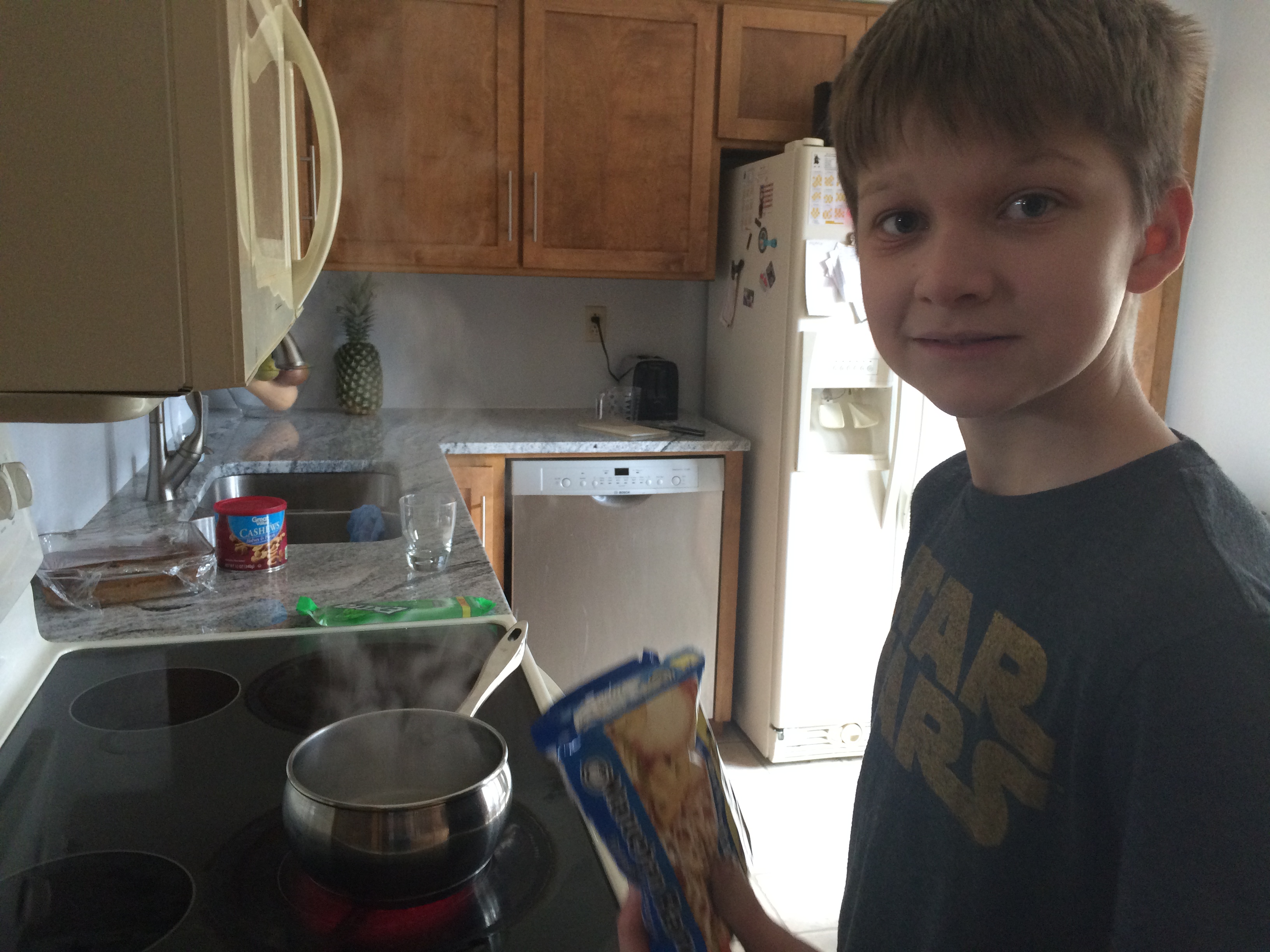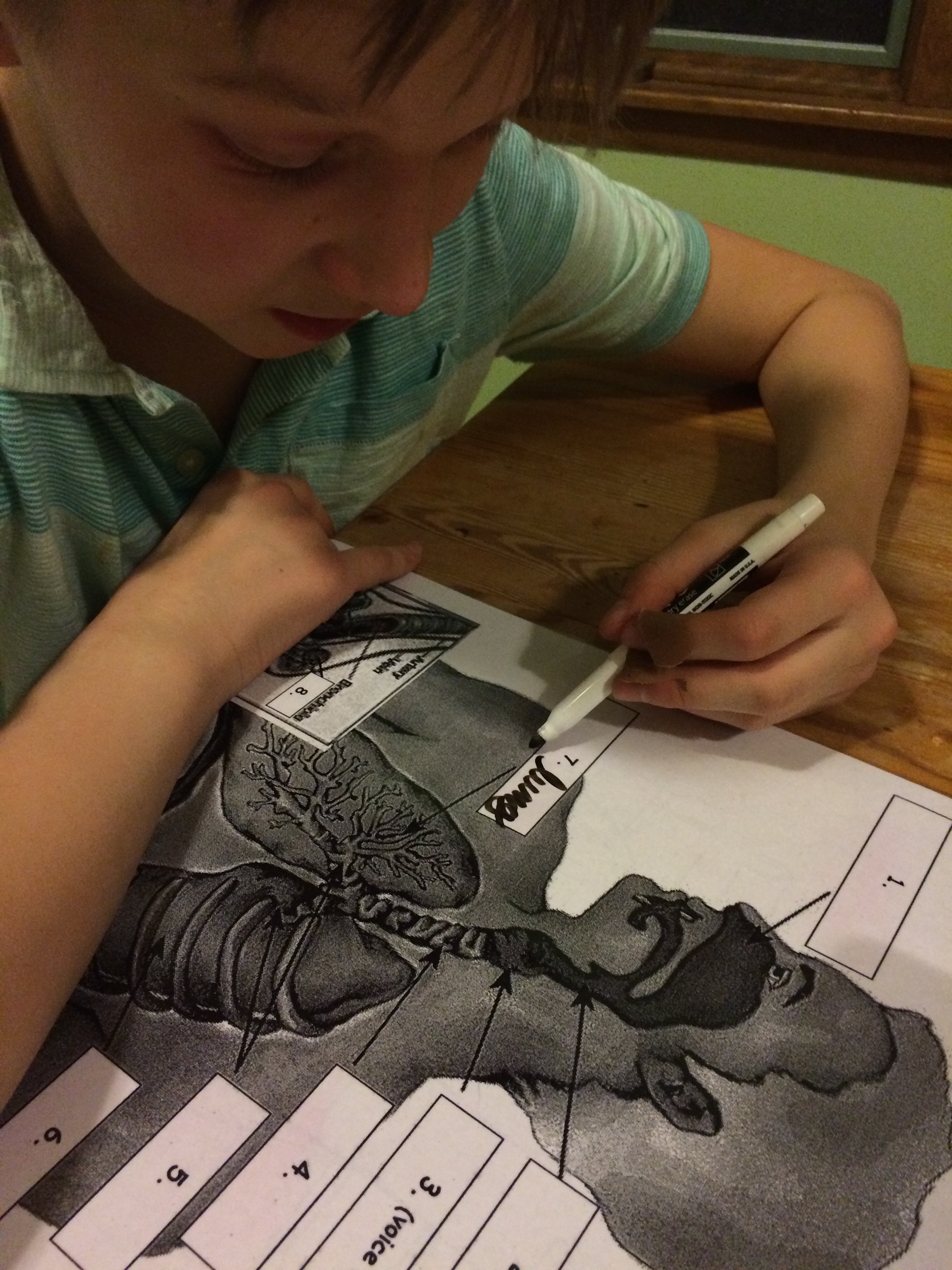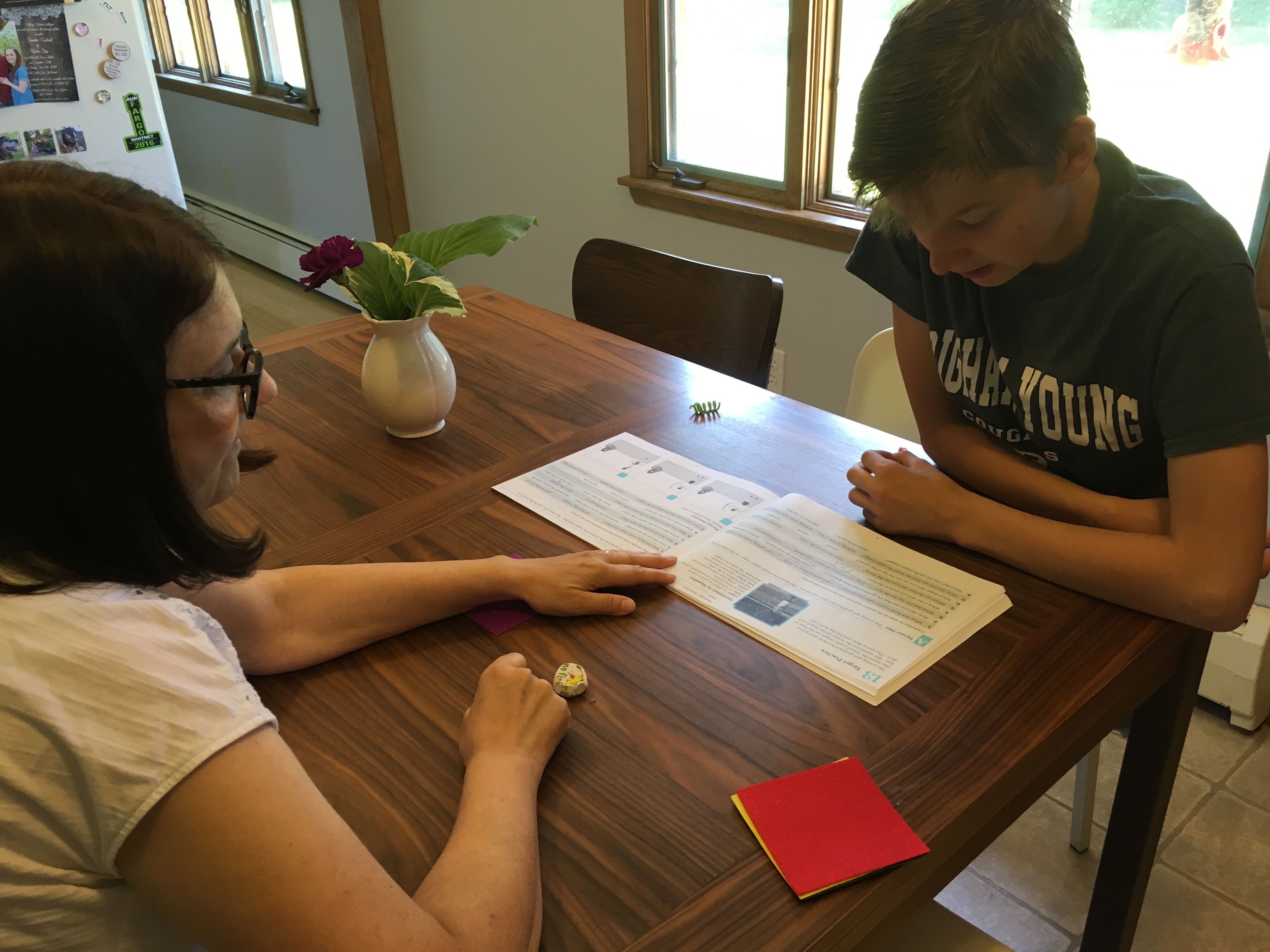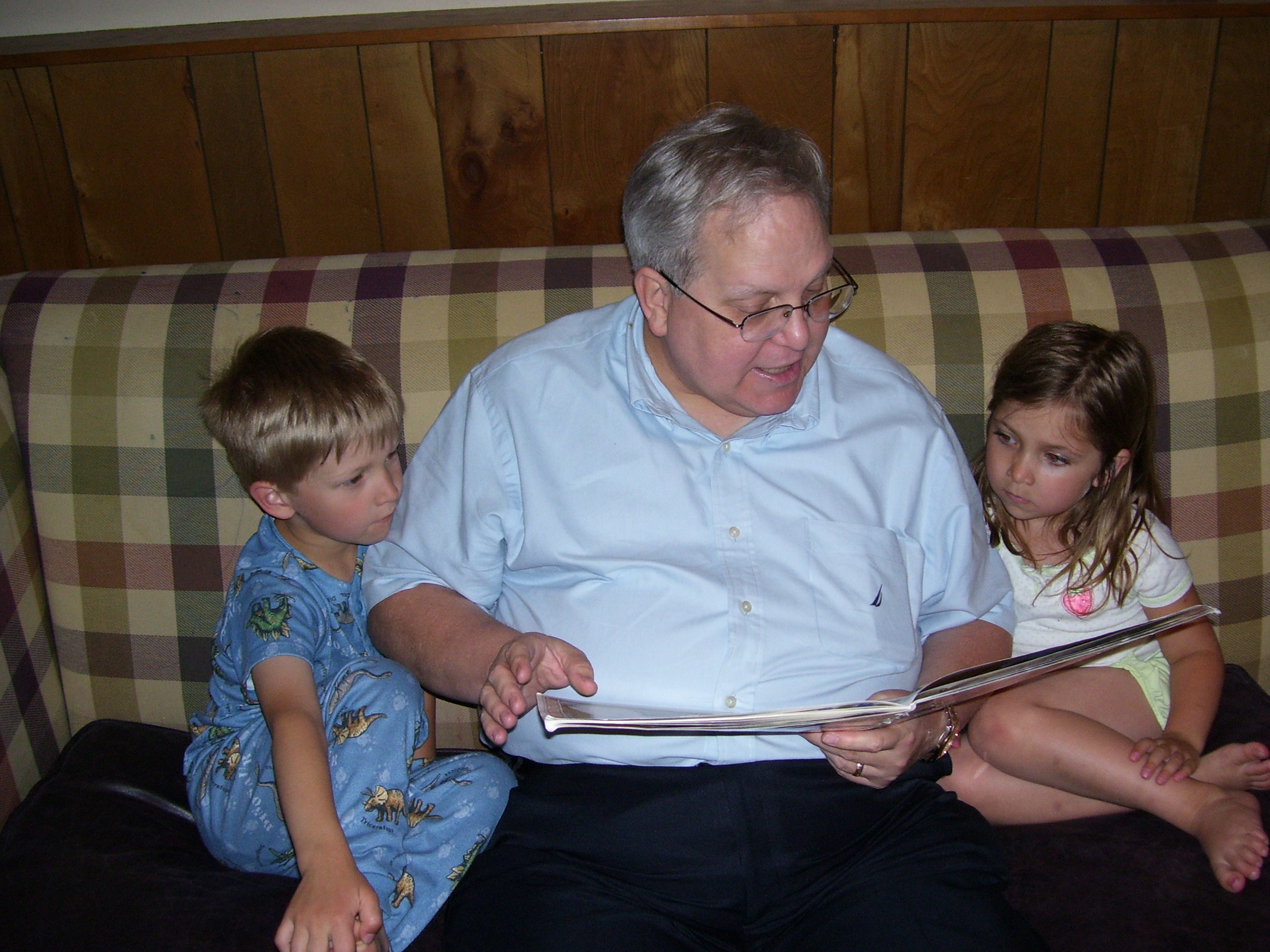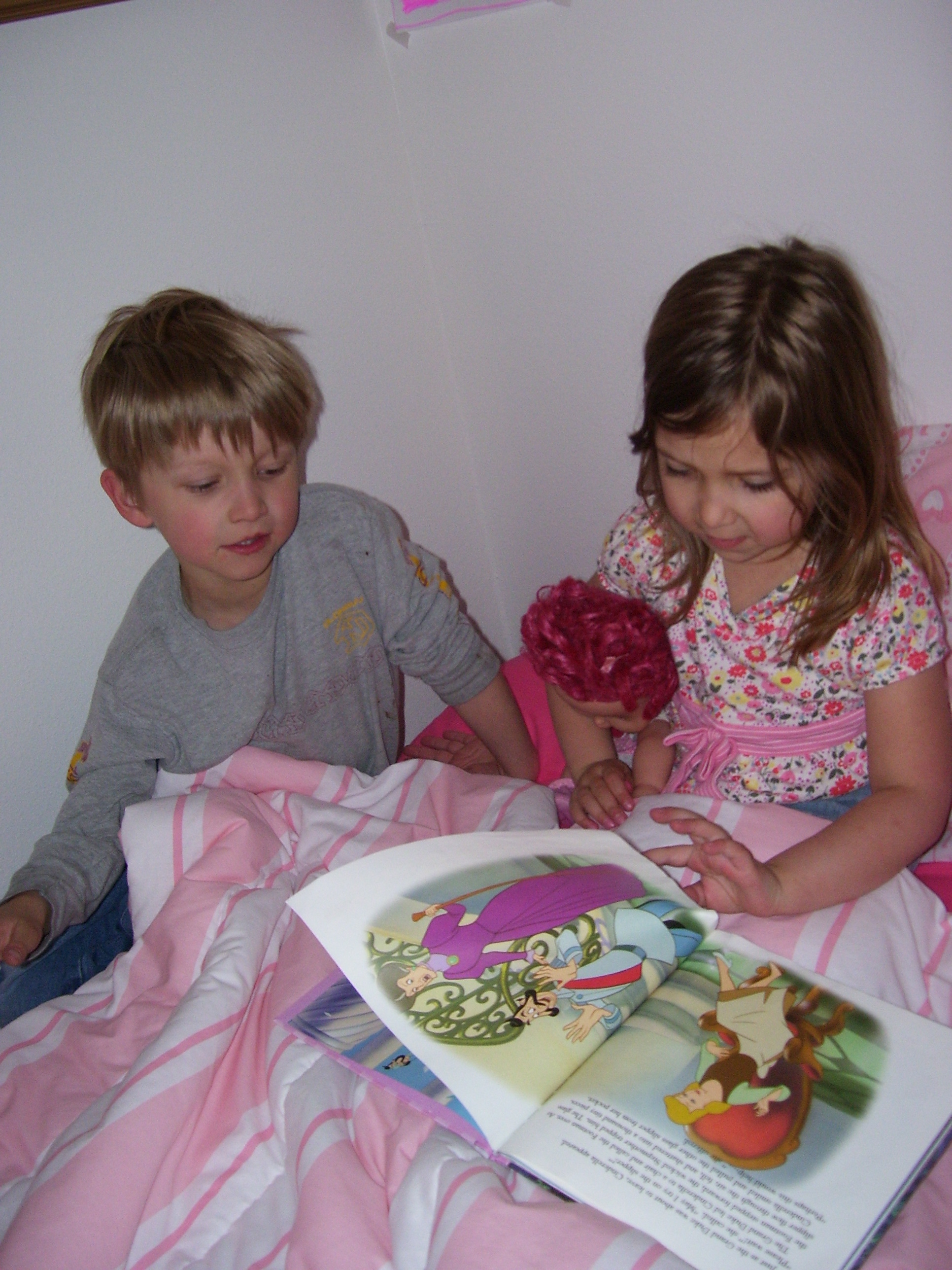
Making Pictures out of Words

One of J’s biggest academic struggles is with reading comprehension. In the beginning he was a fabulous reader. He could sound out words and burn through the early reader books because he’s good at individual words. He loves to figure out how they work together and what the rules are for putting them together. He’s always been a kid who wants to know the rules. (As I’m typing this I’m wondering if we should be reading poetry with this boy to help him build those images and other sensory experiences with words…)
There was even a time where he was obsessed with synonyms, antonyms, and homophones. Especially the homophones. He just thought it was the greatest thing in the world that two words could sound exactly the same but be spelled two different ways and mean two different things.
J loves individual words but has a hard time seeing how they work together as a whole to produce something abstract such as an emotion or motivation. This is typical for kids on the autism spectrum. They don’t understand why people do the things they do in real life–why someone would say something to someone and turn around and do completely the opposite thing?–there’s no logic in that at all. As a toddler (and sometimes even now if he doesn’t know the person very well) he had a hard time reading how someone felt based on the expression on their face. When you read a story you have to make all these connections without any visual cues–all the cues are hidden in the words with nuance and meaning.
Reading novels for school has become more challenging over the years. Usually J and I have a copy of the book at home and we take turns reading sections of the book aloud. At the end of the chapter, my strategy is to usually ask him, “Tell me one thing you remember about what we just read,” and he will pick out something that caught his attention and then I can steer the conversation to other things in the chapter–questions about characters, things they like/dislike, what the character wants (or what/who is challenging the character). Then I write down short notes on what we’ve talked about so we can go back and refresh our minds later as the story progresses or if there’s a test coming up. It looks something like this:
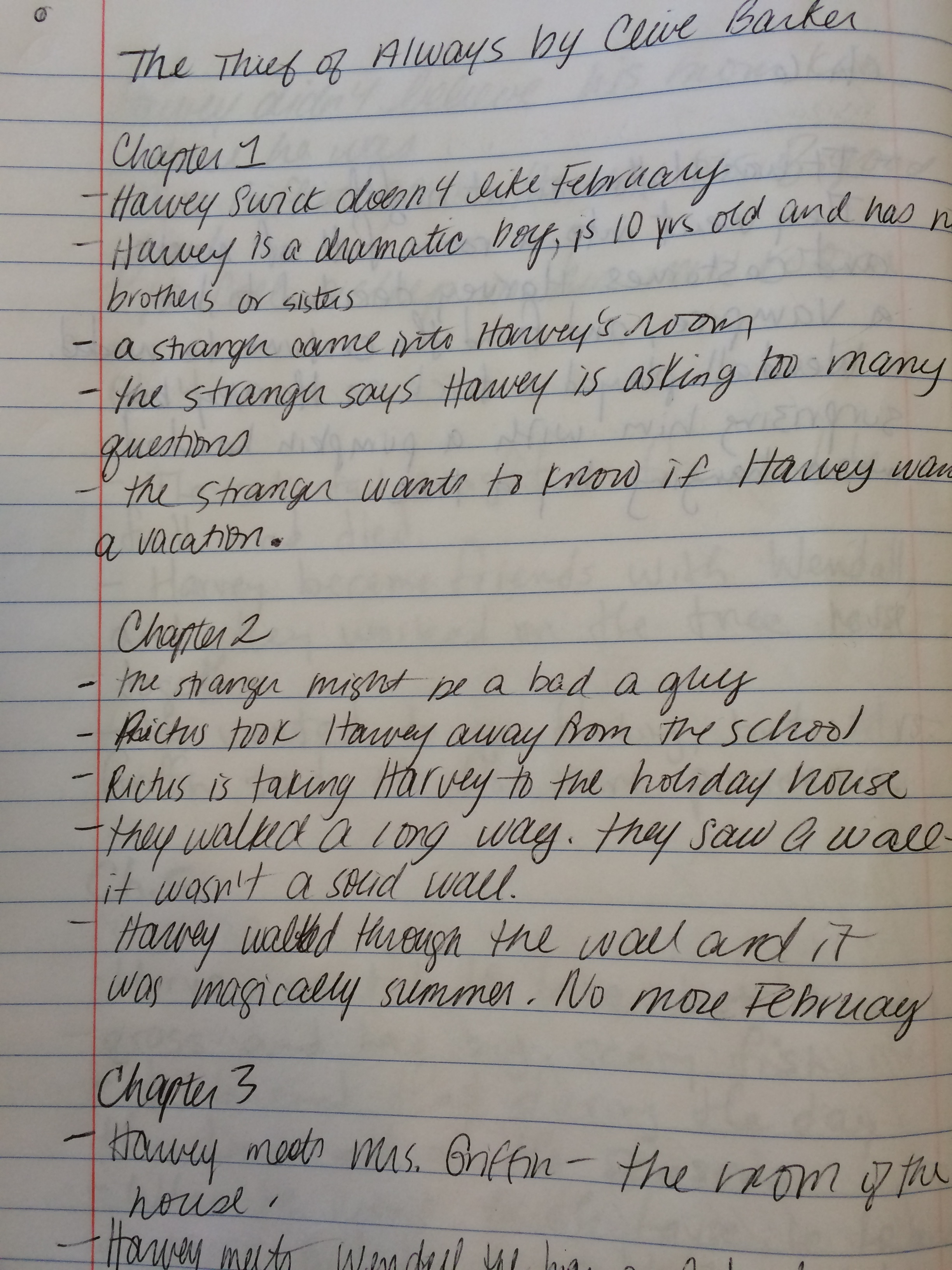
J just recently finished The Thief of Always by Clive Barker (a fantasy book with magic–good fun for a kid who looks at the world in a very literal way 😉 ) for class and had a test over the book. I was able to see a copy of the test beforehand so I could help prep J to study at home. This test was heavily based on character profiles: what each character said and did, often direct quotes from the text. At first it was really overwhelming to prep him for it. J could barely get through summarizing the plot with help. How was he going to get through a test that was more character driven than plot driven?
Two days before the test, I came up with the idea of character profile sheets. I realized that J had no real pictures in his head of what these characters looked like, so I googled images of the characters from the book and assigned important plot points or quotes from the novel so J could visually see them. Descriptions of hair color or other physical features were covered by the picture. When I had quotes for or about the character, I included them in their profile. It helped reinforce the physical description, motives, or important events for the character. It really helped differentiate the three cats for J. He knew what roles the cats had in the story but would get the three confused as one character when I quizzed him. The pictures helped straighten it out for him.

For some reason, Lulu turning into a fish was something that really stuck out in his brain so the quote was easy for him.
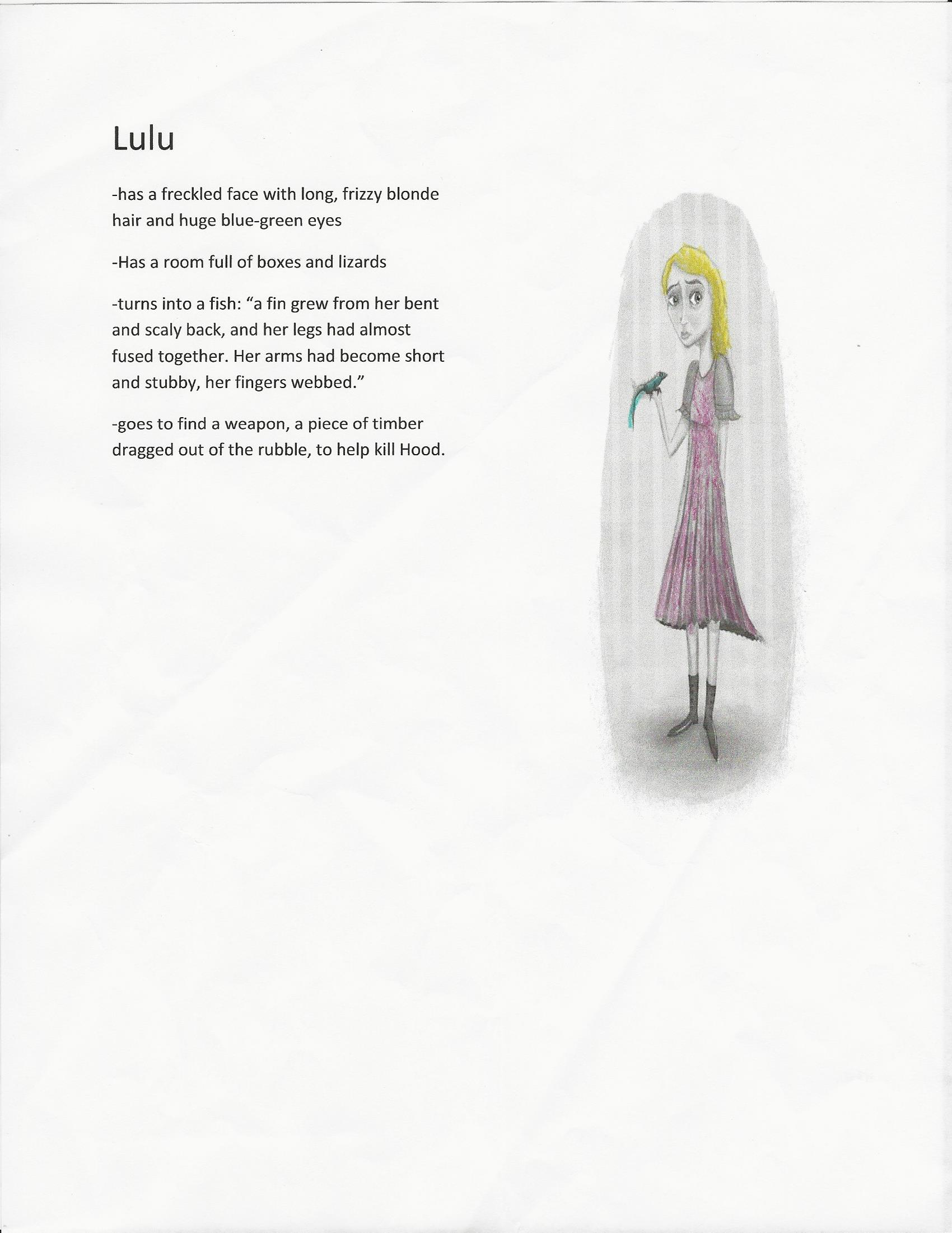
Here’s a good example of how the description of an old woman was better reinforced by a picture. As we read the book, I tried to explain the concept of spider web hair, and J just couldn’t understand what that meant. I think he thought her hair was spider webs. This was a nice bridge of the figurative and literal description.
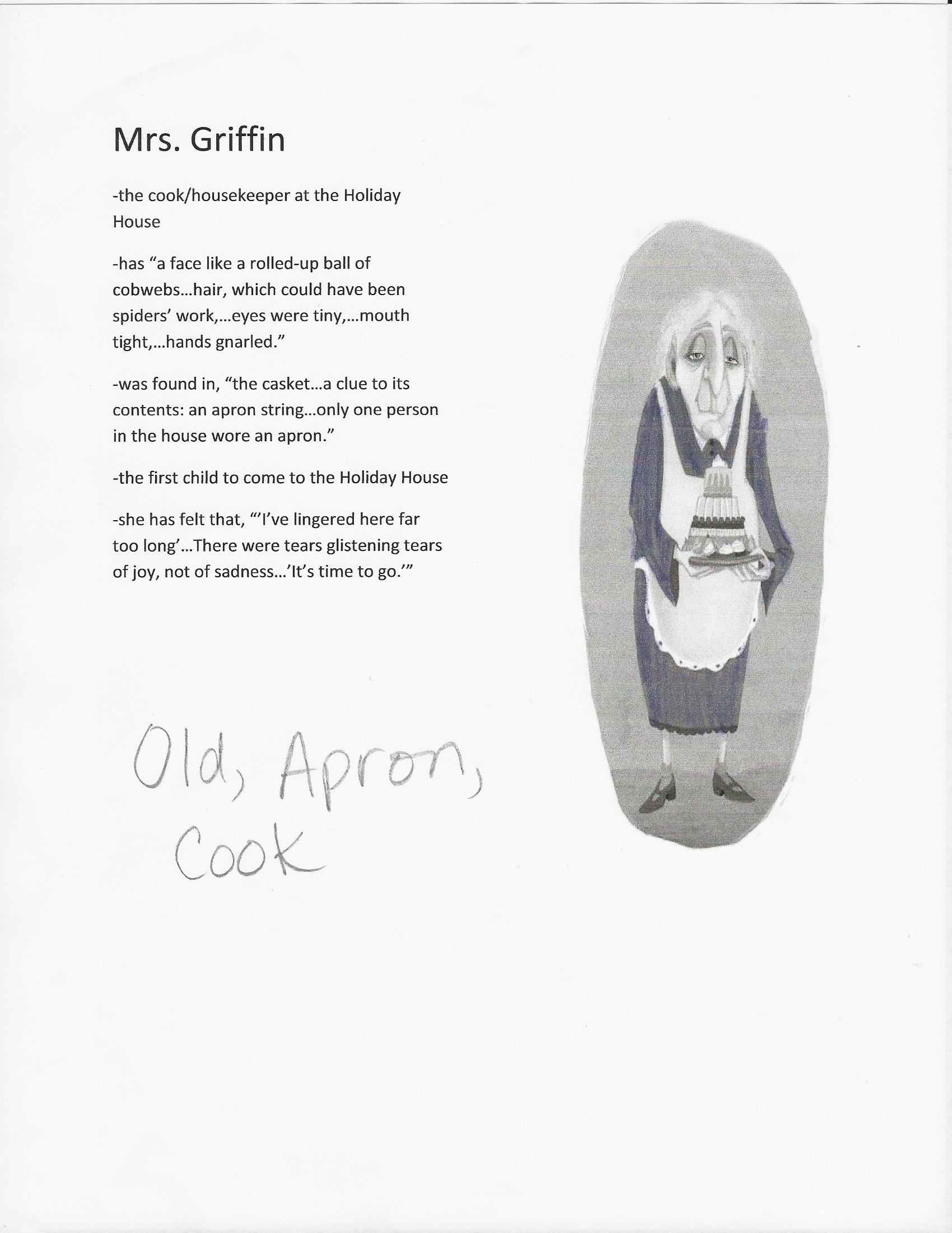
The 3 cats. J LOVED the cats, but thought the cat was just one character. This helped clarify that for him.

I’m always trying to think of creative ways to help J understand what he’s reading better, and the visual character profiles really helped for him. There are things that I would do differently for next time though. Next time we’ll try doing the profiles as we read along and not two days before the test. I’ll have J help pick out the pictures he thinks best fit the descriptions in the book and the pictures in his head. I’ll also see if we can get modifications in the test for a book like this–This book had twelve characters he had to identify and pair up with quotes and half of them had magical powers which was really hard for J to navigate.
It can be an awful mess helping J out academically. I feel like I come up with good ideas after the fact and it’s when I see the mistakes I’ve made that I know what to do and not do for the next time. Sometimes I feel like I’m failing in my attempts and just making him more frustrated about himself instead. But this time, I’m really excited to add this idea to our reading strategies, even if it was a disaster at times along the way. One more way to look a things that might help for the next time.
Just thought I’d share what we are trying 🙂
As a side note, and follow up to the last post, J got 44/46 on his Latin test! I really feel like he’s starting to understand studying strategies a little better!
